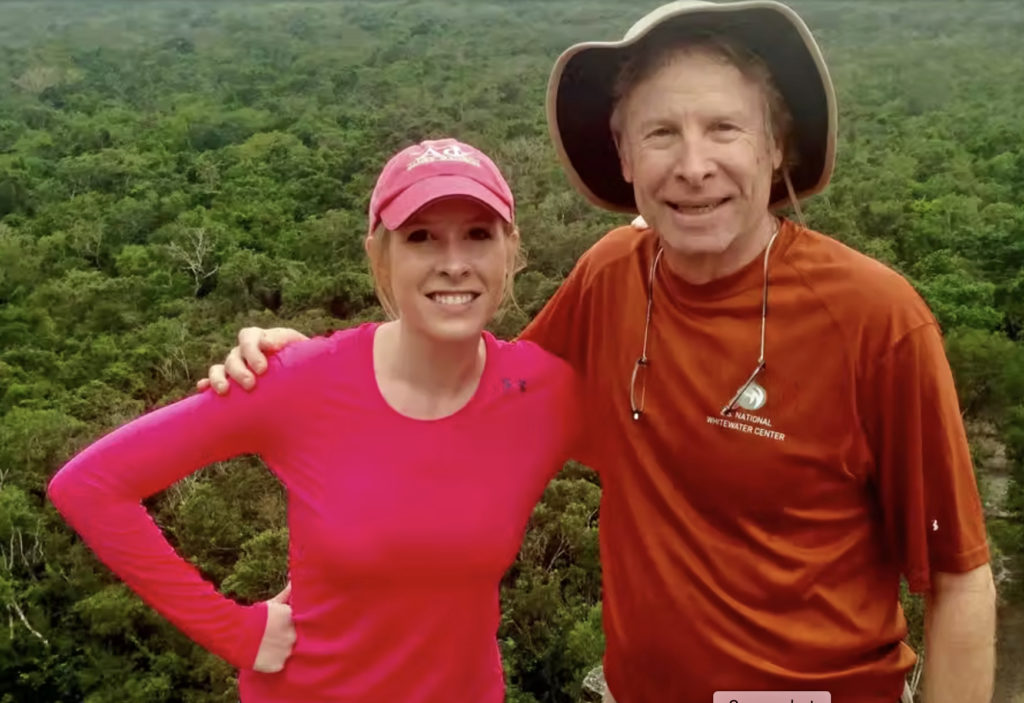A grieving dad, a reporter’s murder on live TV and a ‘Hail Mary’ NFT

Try wrapping your head around this content labyrinth:
It concerns a TV news reporter’s murder caught (twice) via video media; exploitation of the footage on social media; hard-hitting coverage in online media; and what could become the world’s first specimen of non-fungible media.
It’s the saddest of sad, baffling stories. Alison Parker of WDBJ7 in Roanoke, Virginia was fatally shot along with cameraman Adam Ward on Aug. 26, 2015 while on assignment in nearby Moneta, interviewing an exec from a local chamber of commerce.
You’d expect bullets to the head and chest in a war zone, not at the 50th anniversary celebration of a state park. Parker had just turned 24. The killer, Vester Lee Flanagan II, was a former WDBJ reporter who’d been fired in 2013 for disruptive conduct. He filmed the murders on a GoPro and posted them on Facebook hours before killing himself in a police manhunt. WDBJ had also aired Ward’s footage — inadvertently, given the lightning speed of events — before cutting the live feed.
When a senseless killing goes senselessly viral
If only the tragedy ended there.
In the years since, Parker’s grieving father Andy has tried relentlessly to eradicate the video’s media existence, to no avail. To this day, he’s never seen it. But hours after his daughter’s traumatic killing, the footage started popping up Facebook and YouTube, where it has been seen by millions.
Both platforms have taken down thousands of copies but many others still exist. In fact, it only took me about 10 minutes of searching before I found a portion of the horrific event on YouTube, where you can hear the first shots fired.
The company that has since bought WDBJ7, Georgia-based Gray Television, has refused to grant Parker a co-copyright and thus guarantee it will never see the light of day via Internet cretins — not without legal action from Alison’s father. But Gray’s lawyers contend they have reason for this.
As the Washington Post recently reported:
Kevin Latek, chief legal officer for Gray Television, contends that the footage does not depict Alison Parker’s killing since the “video does not show the assailant or the shootings during the horrific incident.”
Again, from the Post:
Latek [has] accused Parker of making false statements about the company and of leaving “threatening and harassing voicemails for Gray Television employees at all levels.”
If that was meant to clear things up, the question remains: What about bloodstains and broken hearts? No one can possibly know what it’s like to lose a daughter. Via murder. On live TV. And in this case, excepting some freakish bolt of lightning striking twice, I mean no one. The layers are simply too painful and surreal for the rest of us fathom.
What’s so hard about Gray giving Parker what he wants? As Parker told Qwoted, “It’s no skin off their back.”
If only it were that simple. The legal parsing breaks down to Gray offering Parker an additional copyright license he could apply through the HONR network. The non-profit was created by Lenny Pozner, whose son was killed in the 2012 Sandy Hook shootings, to help people targeted by online harassment and hate. But Parker’s legal team has said this usage license would be of little value, the Post reports.
From a Gray area to red-hot anger
Meanwhile, it’s impossible to estimate how much money Facebook or YouTube made off the video. Mark Zuckerberg, don’t ya know, gets very confused about what freedom of speech is; numerous times, he’s equated it to freedom from responsibility, without even knowing he was doing it (although Russian election meddlers did).
Parker has plenty of anger to go around for the social media giants. While Gray never has (and presumably never will) make a cent from the footage, Facebook and YouTube have failed to definitively lower the boom. Says Parker:
I’m tired of hearing the same bullshit that I’ve been hearing for the last six years. “Oh, we really try and, oh, we’re doing this and we have this, these are our new terms of service.” And I mean, it is just an endless loop with a few tweaks of an endless loop of lies and bullshit.
His opinion? “I tell people that if Facebook and Google had to have the same oversight as CNN or the Washington Post, or even Fox News, you wouldn’t see this stuff, but they have no editorial oversight.”
Too true.
Frustration yields crypto inspiration
Feeling somewhat powerless, Parker hit on a novel idea to win back some semblance of control: assume rights over the video as a non-fungible token. He created it in December on Rarible, a cryptocurrency marketplace.
The tactic was inspired by Alison Parker’s boyfriend, WDBJ anchor Chris Hurst. That’s right: The same way Bansky now sells his artwork in the digital realm, Andy Parker with this NFT could in theory control the disturbing footage and legally confront anyone who continues to exploit it or use it.
Gray continues to insist that working through HONR is the way to go, adding that the lines of communication remain open. As to the NFT strategy, Latek told Qwoted, “Gray has never been asked for permission to create an NFT using our copyrighted content. While we have provided usage licenses to third parties, those usage licenses do not and never have allowed them to turn our content into NFTs.”
That’s almost stating the obvious as no one can cite a single instance of this ever happening, not even the mythical maker of bitcoin
A token effort? Or something more?
As Parker told The Independent in a February letter,
It’s the proverbial Hail Mary. We’re in uncharted waters and the odds may be slim that this unconventional approach will work. But as Gray, Facebook and Google are keenly aware, giving up is not an option for me.
In channeling his grief, Parker decided to run for as a Democrat to represent Virginia’s 5th Congressional District in the House of Representatives, stressing the issues of gun control and holding social media companies accountable for harmful content. (He was forced to drop out last month after he failed to meet the technical requirements to make the primary ballot, falling less than four dozen petition signatures short.)
Having lost that battle, Parker now has more time to devote to his original one. Due to the absolute lack of precedent, it’s hard to tell where the NFT stratagem will go in the courts. Maybe nowhere; some would say definitely nowhere. Any digital content case at the nexus of content and crypto, especially one that would inform future legal guidance, could take years to sort out.
But if you believe in such things, this is just the kind of story that the late Alison Parker would want to share with her loyal viewers. As her father put it, “Alison was part of the fraternity, I mean, she was a journalist. And they have been, the media in general has been again, very gracious and cooperating and willing to keep this story alive.”
As they say in the world of TV news, stay tuned for details.
Lou Carlozo is Qwoted’s Editor in Chief. All views expressed are non-fungible and inexpugnable. Email lou@qwoted.com or connect on LinkedIn.
POPULAR POSTS
LATEST ARTICLES
CATEGORIES
